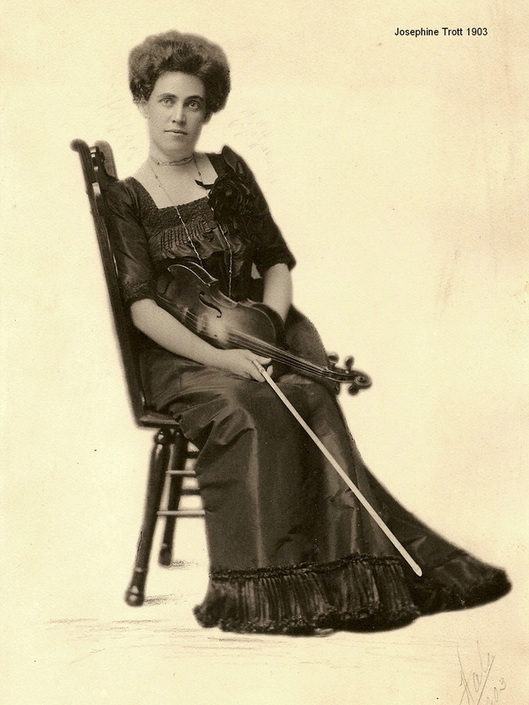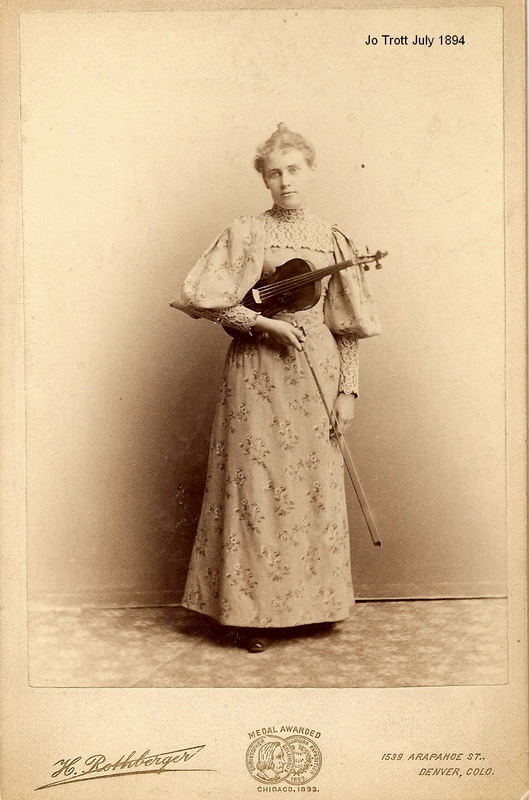
And I whispered vey carefully to Jules so that he never did forget, the three wonderful secrets:
- Practice slowly, very slowly!
- Listen, listen, and listen again!
- Watch the bow and teach him to be accurate and exact in his movements!”
Stillings was born into one of Boston’s musical families in 1889. Her grandfather had been one of the founders of the Boston Conservatory, and she began violin lessons at the age of three. In the early years of the 20th century, she won a scholarship to study with Joachim (then aged 70) in Berlin. According to a 1939 article in The Milwaukee Journal, Stillings showed up for her audition “with a big hair ribbon and a Peter Thompson sailor suit,” and was one of four students out of 60 applicants chosen. When Joachim told her “Sie sind aufgenommen” (meaning “You are admitted”) she burst into tears because she didn’t understand German and thought she had failed.
In a Milwaukee Journal newspaper article from 1940, Stillings described the atmosphere of Joachim's class:
“Those were the happy days before the outbreak of the great war [WWI]. I was the only American in a group of 70 accomplished violinists, including four girls, who had to report daily, punctually at 2 in the afternoon, to the great Joachim. His classes, of 30 pupils each, were taught in a large room where the only piece of furniture was a grand piano. As there were no chairs, we had to stand in a circle around him, while he, with the commanding gestures of a great orchestra conductor, approved or disapproved, rarely praising but often criticizing our mistakes.”
After a year and a half of study with Joachim, Stillings moved on to Russia and acceptance into Leopold Auer’s class at the Royal Conservatory in St. Petersburg. She joined pupils Jascha Heifetz and Misha Elman, both studying with Auer at that time. Auer believed in frequent student performances, called “public examinations,” to conquer performance anxiety. At one such performance, Stillings played before Czar Nicholas II and his court, and was given the gift of a “fancy Easter egg”-- Faberge?
In 1923 Stillings toured South America, performing in Peru, Chile, Argentina, Uruguay and Brazil. However, on her return to the U.S., her life took a dramatic turn. She was struck with an illness which caused a rare form of blindness. Unwilling to accept this fate, she spent several years and most of her concert earnings traveling to major medical centers in search of a cure. Recovery was slow and painful, and in the process it became clear that Stillings’ days as a soloist were at an end.
To be continued!




 RSS Feed
RSS Feed